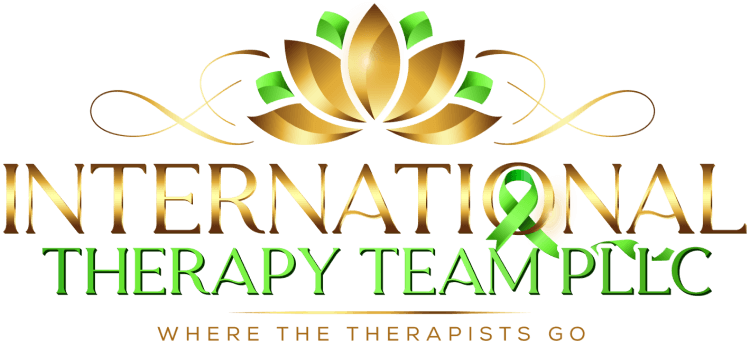Mental health, a critical component of overall well-being, commands increasing attention in contemporary discourse. Central to this conversation is healthy communication, an essential element for both enhancing mental wellness and strengthening relationships. Defined by its clarity, respectfulness, and empathy, healthy communication transcends simple verbal exchanges. This article aims to explore the critical role of healthy communication in improving mental health outcomes. We will examine its benefits, address the challenges it faces, and provide strategies for individuals to refine their communication skills. By understanding the impact of effective communication on our emotional and psychological well-being, we can better navigate our relationships and foster a more supportive environment for mental health. Join us as we explore the transformative power of healthy communication in the journey towards mental wellness.
Understanding Healthy Communication
At its core, healthy communication involves the exchange of ideas, thoughts, and feelings in a manner that is open, clear, and respectful. This type of communication is not just about what is said but also how it is expressed, with an emphasis on mutual understanding and respect. The characteristics of healthy communication include active listening, empathy, honesty, and constructive feedback, all of which contribute to effective and meaningful interactions.
Distinguishing healthy from unhealthy communication practices is crucial for personal development and relationship maintenance. While healthy communication builds trust and strengthens bonds, unhealthy communication—marked by criticism, avoidance, and hostility—can lead to misunderstandings, conflicts, and emotional distress. Understanding these dynamics is the first step towards cultivating a more supportive and understanding environment for everyone involved.
Psychologically, effective communication plays a foundational role in how we perceive ourselves and others. It influences our ability to navigate social situations, resolve conflicts, and express our needs and boundaries. In essence, mastering healthy communication skills can significantly impact our mental health by improving our relationships, enhancing our self-esteem, and providing us with tools to express our emotions constructively.
As we delve deeper into the importance of healthy communication in mental health, we will explore its impact, identify common barriers, and offer strategies for improvement. The goal is to empower individuals with the knowledge and skills needed to communicate more effectively, fostering better understanding, stronger relationships, and improved mental well-being. Join us on this journey as we unlock the transformative power of healthy communication in the context of mental health.
The Impact of Healthy Communication on Mental Health
Healthy communication is more than a skill; it’s a bridge to deeper understanding and emotional wellness. Its impact on mental health is profound and multifaceted, touching every aspect of our lives—from personal development to the quality of our relationships. Here, we explore how mastering the art of healthy communication can be transformative, enhancing emotional regulation, preventing misunderstandings, and fostering self-esteem.
Enhancing Emotional Regulation
One of the most significant benefits of healthy communication is its role in emotional regulation. Expressing ourselves effectively allows us to navigate our emotions in a more balanced way. When we articulate our feelings and needs clearly, we invite understanding and support from others, reducing feelings of isolation or distress. This open exchange can diffuse tension and prevent the escalation of emotions, leading to more harmonious relationships and a stable emotional state.
Preventing Misunderstandings and Conflicts
Misunderstandings and conflicts are often the result of communication breakdowns. Healthy communication, characterized by active listening and empathetic responses, ensures that all parties feel heard and understood. By fostering an environment where everyone can express their thoughts without fear of judgment, we significantly reduce the potential for conflicts. This proactive approach to communication helps maintain positive interactions, both in personal and professional contexts.
Building Self-esteem and Confidence
Effective communication also plays a pivotal role in building self-esteem and confidence. When we communicate assertively, expressing our needs and boundaries clearly, we affirm our self-worth. This affirmation comes both from within, as we recognize our value and assert our rights, and from others, as they respond to our clear and respectful communication. Over time, this positive reinforcement builds a stronger sense of self and enhances our confidence in social interactions.
The ripple effects of healthy communication on mental health are undeniable. By improving our ability to manage emotions, reducing the likelihood of misunderstandings, and strengthening our self-esteem, healthy communication skills lay the groundwork for better mental health outcomes. As we continue to explore the facets of healthy communication, we’ll delve into the barriers that can hinder these positive effects and strategies to overcome them, further emphasizing the pivotal role of communication in our mental well-being.
Barriers to Healthy Communication
Despite its critical importance, achieving healthy communication can sometimes feel like navigating a complex labyrinth. Various barriers can obstruct the pathway to effective dialogue, from individual emotional hurdles to technological disruptions. Recognizing and addressing these obstacles is key to enhancing our communication skills and, by extension, our mental health.
Emotional and Psychological Barriers
One of the most significant challenges to healthy communication is the presence of emotional and psychological barriers. Fear of rejection, past traumas, and low self-esteem can all make it difficult for individuals to express their thoughts and feelings openly. These barriers not only impede the expression of one’s own needs but can also affect the ability to listen and respond empathetically to others. Overcoming these hurdles requires self-reflection, patience, and sometimes, professional support to heal and move forward.
Cultural Differences
Cultural backgrounds shape our communication styles in profound ways. What is considered assertive in one culture may be perceived as aggressive in another. These differences can lead to misunderstandings and conflicts when not navigated with sensitivity and awareness. Bridging cultural gaps in communication necessitates an open mind, respect for diversity, and a willingness to learn from others’ perspectives.
Technology and Social Media
In the digital age, technology and social media have transformed the way we communicate, introducing new challenges to healthy communication. Digital platforms can lead to misinterpretations, as the absence of non-verbal cues makes it harder to convey tone and emotion. Moreover, the pervasive use of technology can diminish face-to-face interactions, essential for building deep and meaningful connections. To mitigate these effects, it’s important to balance digital communication with in-person interactions and to be mindful of how we express ourselves online.
Overcoming Barriers to Healthy Communication
Addressing these barriers begins with awareness and a commitment to personal growth. Developing emotional intelligence, embracing cultural diversity, and fostering digital wellness are all steps toward healthier communication. Engaging in active listening, practicing empathy, and seeking common ground can also help overcome misunderstandings and build stronger relationships.
By identifying and tackling these obstacles, we pave the way for more effective and fulfilling interactions. The journey toward healthy communication is ongoing, but each step forward enriches our relationships and enhances our mental well-being.
Developing Healthy Communication Skills
Cultivating healthy communication skills is a journey that can significantly enhance both personal and professional relationships. By focusing on active listening, clear expression, and constructive feedback, individuals can foster an environment of understanding and respect. Here are some practical tips and strategies to develop and refine these essential skills.
Active Listening
Active listening is the foundation of healthy communication. It involves fully concentrating on what is being said rather than passively hearing the speaker’s words. Here’s how you can practice active listening:
- Give your full attention: Put aside distracting thoughts and focus entirely on the speaker.
- Show that you’re listening: Use your body language and gestures to convey your attention.
- Provide feedback: Reflect on what has been said by paraphrasing. Ask questions to clarify certain points.
- Defer judgment: Allow the speaker to finish each point before asking questions.
- Respond appropriately: Be candid, open, and respectful in your response.
Expressing Thoughts and Feelings Clearly
Effective communication also requires the clear expression of thoughts and feelings. Here’s how to enhance clarity and respectfulness in your communication:
- Use “I” statements: Express your feelings and thoughts from your perspective, without blaming or criticizing others.
- Be specific and assertive: Clearly state your needs and desires without being aggressive.
- Practice empathy: Try to understand the situation from the other person’s perspective.
- Stay focused on the present: Discuss current issues without bringing up past grievances.
Giving and Receiving Feedback Constructively
Feedback is an integral part of healthy communication, essential for growth and improvement. Here’s how to handle feedback constructively:
- When giving feedback: Focus on specific behaviors rather than personal traits. Use “I” statements and offer solutions or suggestions.
- When receiving feedback: Listen openly without becoming defensive. Seek to understand the perspective of the giver and consider it as an opportunity for growth.
Practical Exercises
- Role-playing: Engage in role-playing exercises to practice expressing yourself and responding to others in a controlled environment.
- Reflection: After conversations, reflect on what went well and what could be improved. Consider how your communication style impacts your interactions.
- Seek feedback: Ask close friends, family, or colleagues for their honest feedback on your communication style.
Improving communication skills is a dynamic process that requires patience, effort, and commitment. By actively working on these areas, individuals can enhance their ability to engage in healthy communication, leading to more satisfying and supportive relationships. As we continue to explore the nuances of communication, remember that each step forward contributes to a stronger foundation for mental well-being and relational harmony.
Healthy Communication in Various Relationships
The principles of healthy communication are universal, yet their application can vary significantly across different types of relationships. Whether it’s within families, among romantic partners, or in the workplace, adapting our communication strategies to suit the context can lead to more meaningful connections and resolve potential conflicts effectively. Here, we explore how to apply healthy communication practices in various relational dynamics.
Family Dynamics
In the family setting, healthy communication fosters a sense of security and belonging. For parents and children, open lines of communication encourage trust and understanding. Key strategies include:
- Regular check-ins: Establish routines for family members to share their experiences and feelings.
- Active listening: Show genuine interest in each other’s lives, acknowledging emotions without judgment.
- Conflict resolution: Approach disagreements with the aim to understand and find mutual solutions, rather than to win an argument.
Romantic Relationships
Communication in romantic relationships requires vulnerability and honesty. Building intimacy through open and honest communication can strengthen the bond between partners. Effective strategies include:
- Express needs and desires: Clearly convey your needs and expectations to avoid misunderstandings.
- Practice empathy: Try to see situations from your partner’s perspective, acknowledging their feelings.
- Maintain respect: Even in disagreements, communicate respectfully, avoiding hurtful words and actions.
Workplace Interactions
The workplace benefits immensely from healthy communication, leading to improved teamwork, productivity, and employee satisfaction. To foster a positive work environment:
- Clear expectations: Ensure that roles, responsibilities, and expectations are communicated clearly to avoid confusion.
- Feedback culture: Cultivate an environment where constructive feedback is encouraged and valued.
- Inclusive discussions: Promote an inclusive culture where every team member feels valued and heard.
Adapting Communication Styles
Recognizing and adapting to different communication styles is crucial in all these relationships. Pay attention to verbal and non-verbal cues, and be flexible in your approach to address the unique needs of each relationship. Whether it’s using more affirmations with a partner who values words of affirmation or adopting a more direct style in professional settings, the ability to adjust your communication style enhances interpersonal interactions.
Conclusion
Healthy communication is the thread that weaves through the fabric of all relationships, holding the potential to enrich connections and navigate the complexities of human interactions. By applying these principles across the spectrum of our relationships, we can build stronger bonds, resolve conflicts constructively, and create supportive environments where everyone feels heard and valued.




